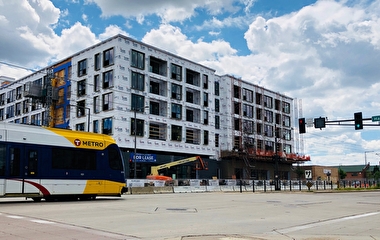such as places where many fatalities have occurred. Photo: Shutterstock
Speed kills. It’s a factor in approximately one-third of all U.S. fatal crashes and contributes to almost as many crashes as alcohol and distracted driving combined. To address this safety issue, states regulate speeds and give law enforcement agencies the authority to enforce these laws. However, there is often a lack of consensus and acceptance regarding the certainty and method of enforcement.
“We know that exceeding posted speed limits is a common practice and that it is a safety problem most people don’t recognize,” says Frank Douma, director of the State and Local Policy Program at the Humphrey School of Public Affairs. “One solution to this problem would be ramping up enforcement using automated speed enforcement (ASE), which has been shown to reduce average speed, crash rates, injuries and fatalities, and speeds over the entire network when properly deployed.”
Despite these benefits, the idea of implementing ASE in Minnesota is highly controversial. In a seminar from the U of M’s Roadway Safety Institute (RSI), Douma discussed the nature of the controversy around ASE, with a focus on why ASE has not been implemented in Minnesota.
Douma began with an overview of a 2012 public opinion survey, which showed that the overwhelming majority of Minnesotans support ASE in select locations such as places where many fatalities have occurred and in school zones and work zones.
“It would seem that if you just did a public opinion survey and that would carry the day in the legislature, you might see some kind of limited deployment of ASE in Minnesota. However, it has not gotten to that point,” Douma said. “One challenge is that around the same time ASE was first moving forward, progress was stopped after red-light camera deployment was overturned by Minnesota courts, which created the false perception that red-light and speed enforcement cameras are not constitutional.”
Next, Douma discussed the results of an RSI project that builds upon the earlier public opinion survey through in-depth interviews with key stakeholder groups and online focus groups with members of the driving public.
“The answers with the stakeholder group were wide and varied; however, there was strong agreement that the safety impacts of ASE were desirable,” Douma says. “We also discovered that the best way to talk about ASE with members of the public was to discuss the relationship between speeds and road safety. We found that many drivers still see speed as a good thing, regularly exceed the posted speed limit, and aren’t aware that speed is a serious safety problem.”
Finally, the presentation examined whether the certainty of punishment affects driving behavior and crashes. “Ultimately, we need to create an environment in which speeders are seen as endangering others and creating a public safety threat and in which enforcement of speed limits is a certain thing rather than one that depends on where you are and which officer is involved,” Douma says.
“Despite all of this evidence to the contrary, people do not appear to believe speeding is a problem,” he stressed. “This perception needs to be addressed before any new enforcement methods will be acceptable.”



